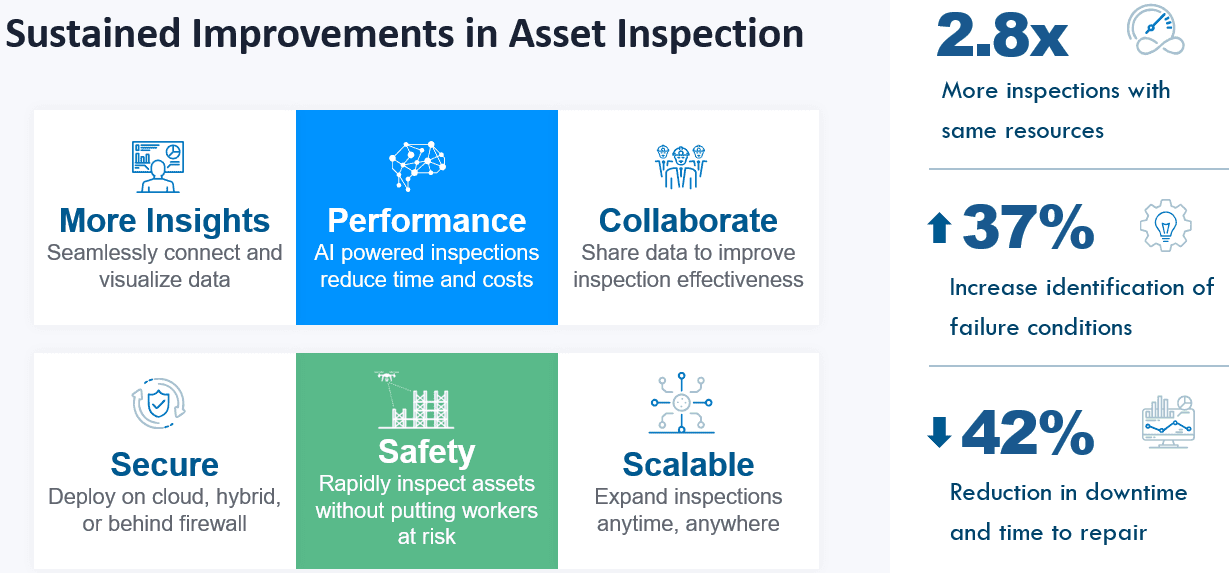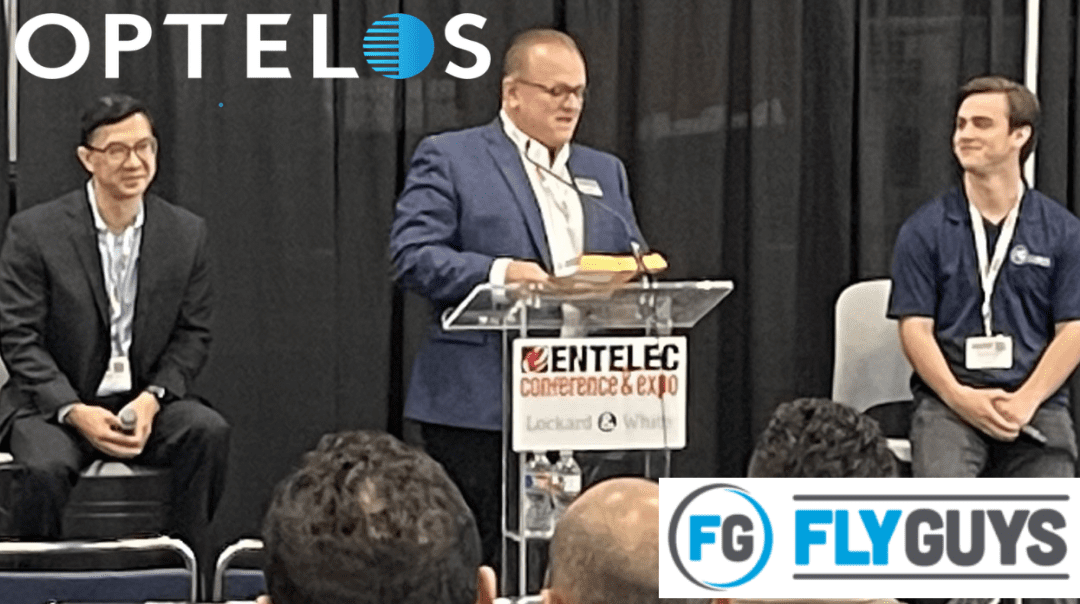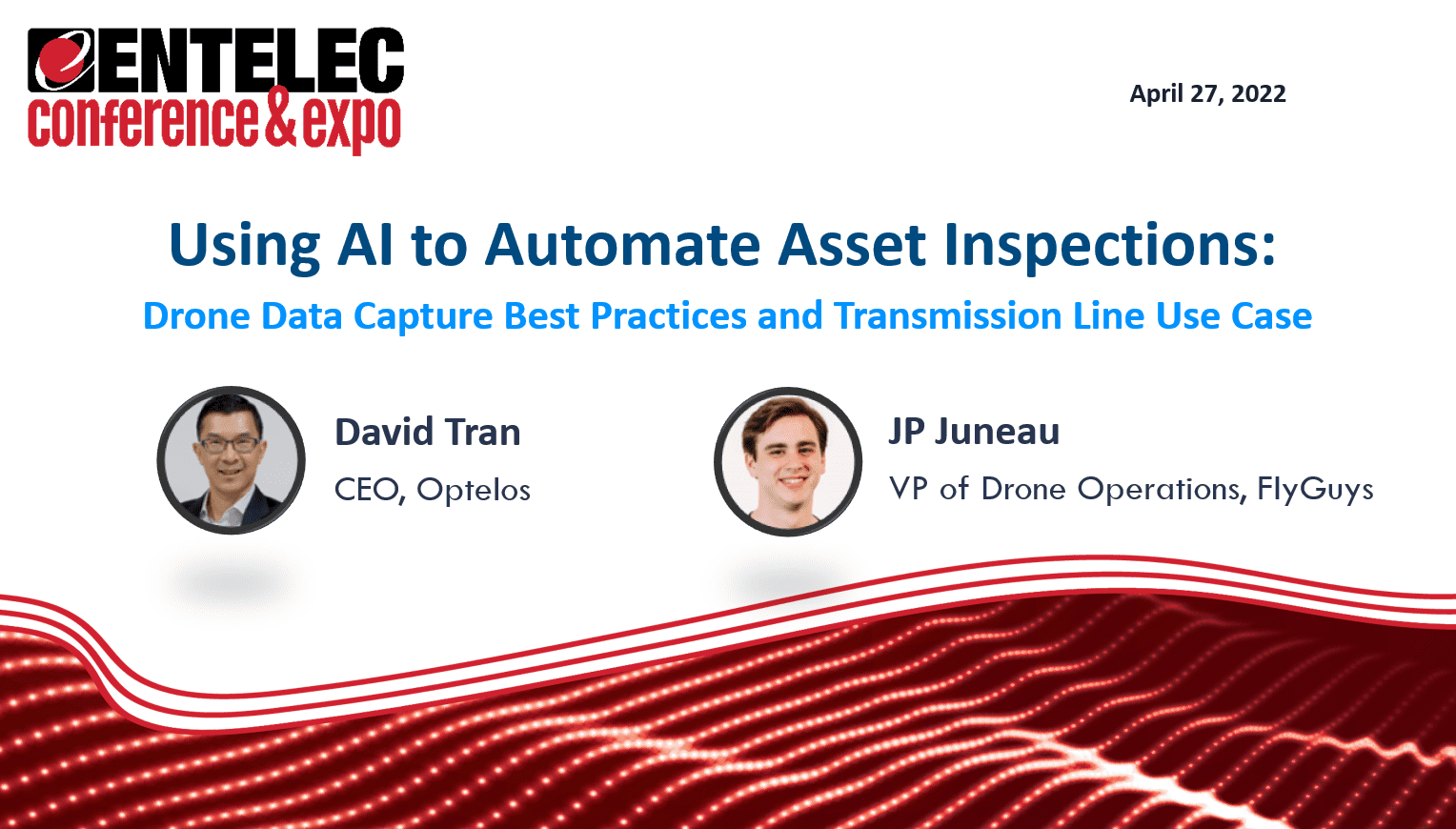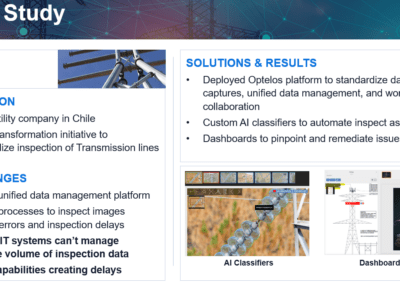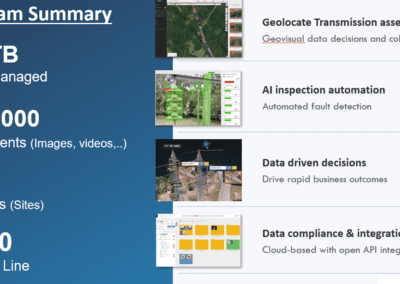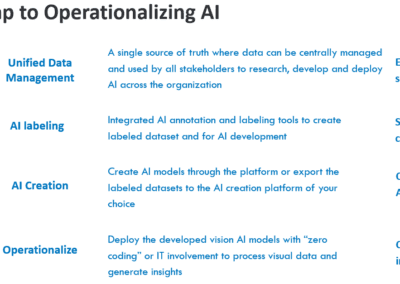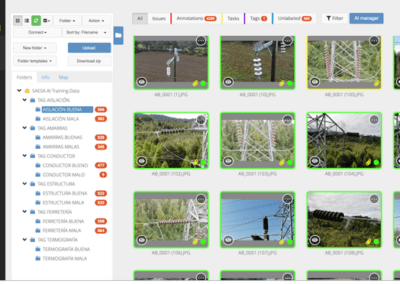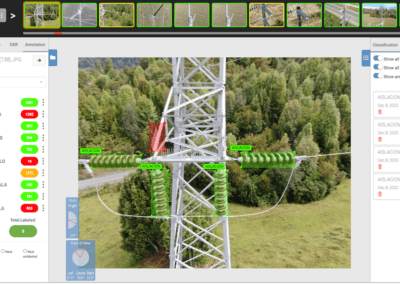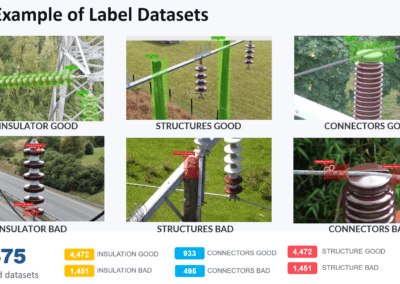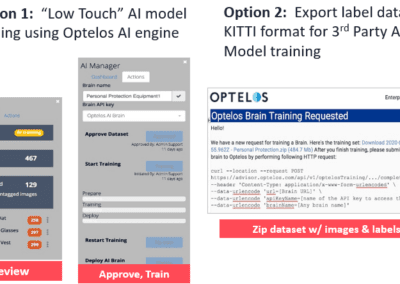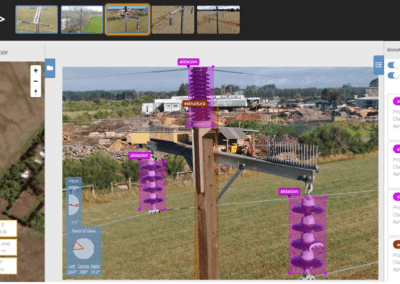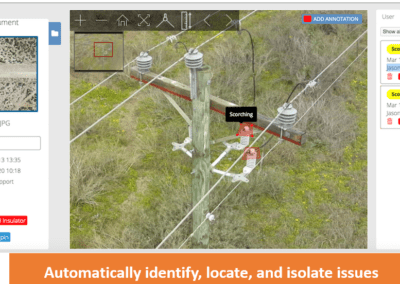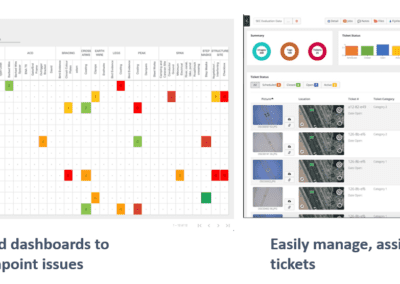Optelos and FlyGuys Share Visual AI Best Practices and Use Cases at Entelec 2022
Optelos CEO David Tran and FlyGuys VP of Drone Operations JP Juneau presented to an energetic audience at Entelec 2022 in Houston, TX on April 27, 2022. Entelec was held this year at the George R. Brown Convention Center in Houston, TX, which featured presentations from technology companies such as Optelos and FlyGuys that are helping leading enterprises in the energy sector complete their digital transformation of asset inspection.
The joint presentation on “Using AI to Automate Asset Inspections: Drone Data Capture Best Practices and Transmission Line Use Case” addressed many common questions that leaders in the energy sector have regarding how to go about implementing an automated visual AI inspection program. Large enterprises are increasingly interested in digitally transforming their asset inspection programs with computer vision AI, but most struggle with understanding how to get their programs off the ground.
Typical issues companies experience are:
• Not setting clear program objectives.
• Incorrect data capture techniques to achieve program goals.
• Poor data management procedures for managing, processing and sharing program inspection data.
• Determining their program’s ROI to support increased funding for expansion or advancement.
Covered during the presentation were the considerations and steps involved in implementing a successful computer vision AI program for power utilities, including:
- Setting program objectives: Stepping back and thinking through the specific goals/problems you are trying to address with your drone inspection program, which drives drone platform and sensor selection:
- What problems are you trying to solve, track or observe?
- What metrics will you need to collect and track in order to address your objectives? What data will you need to prove the ROI of your investments?
- How often do you need to collect the data in order to observe the changes/fault conditions you’re tracking?
- What level of precision do you need to determine whether you’ve met your program goals?
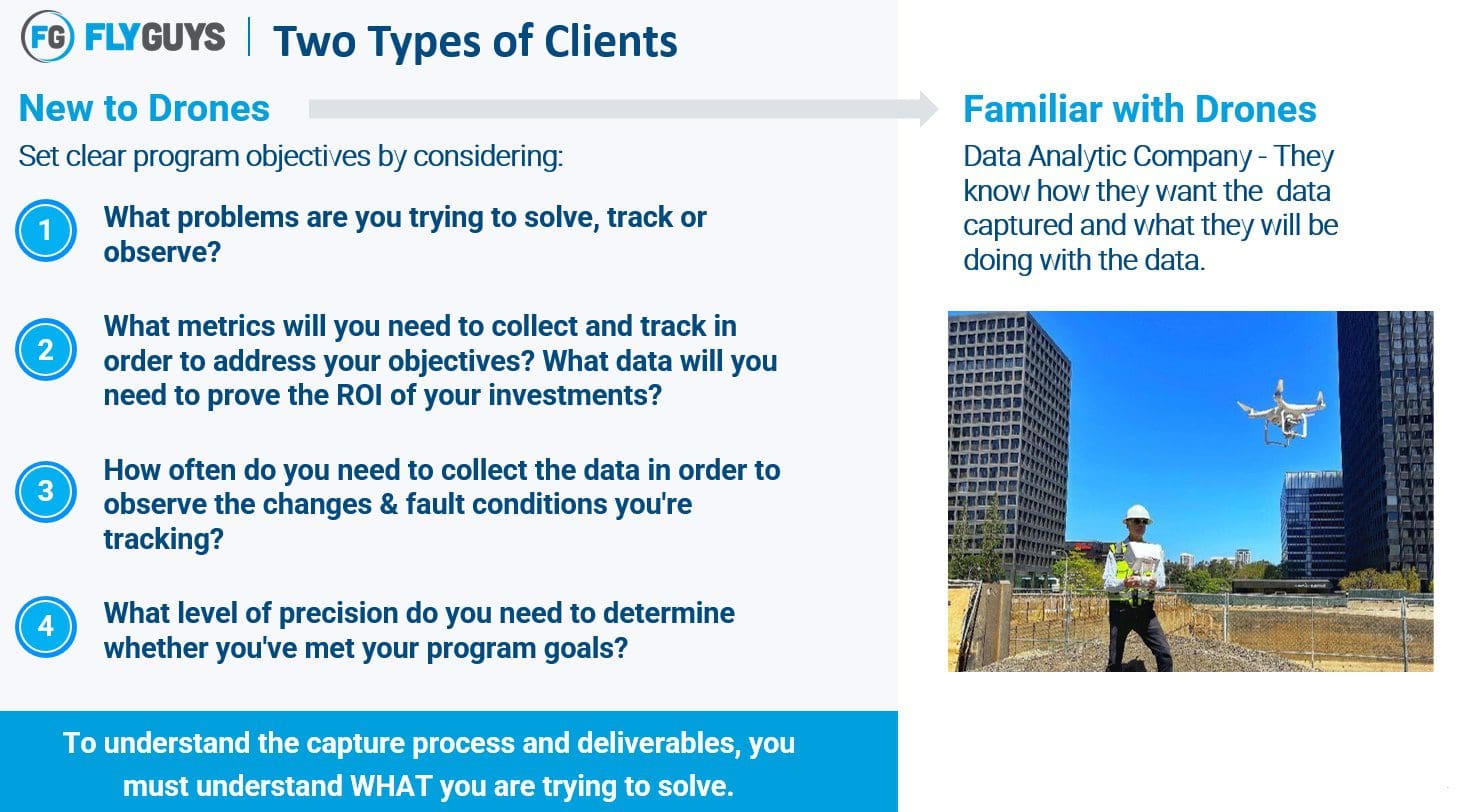
2. Equipment considerations: Depending on what you’re inspecting, it will drive what hardware, sensors, and data capture techniques required to achieve program objectives.
- What types of infrastructure or equipment need to be inspected? Vertical or horizontal? In an enclosed space or open?
- Geographic considerations: Is it in a single site or across hundreds of miles?
- Fault conditions and sensors: Are you inspecting for issues that can be observed with visual sensors (corrosion, missing brackets, alignment issues), thermal, gas leaks, etc.
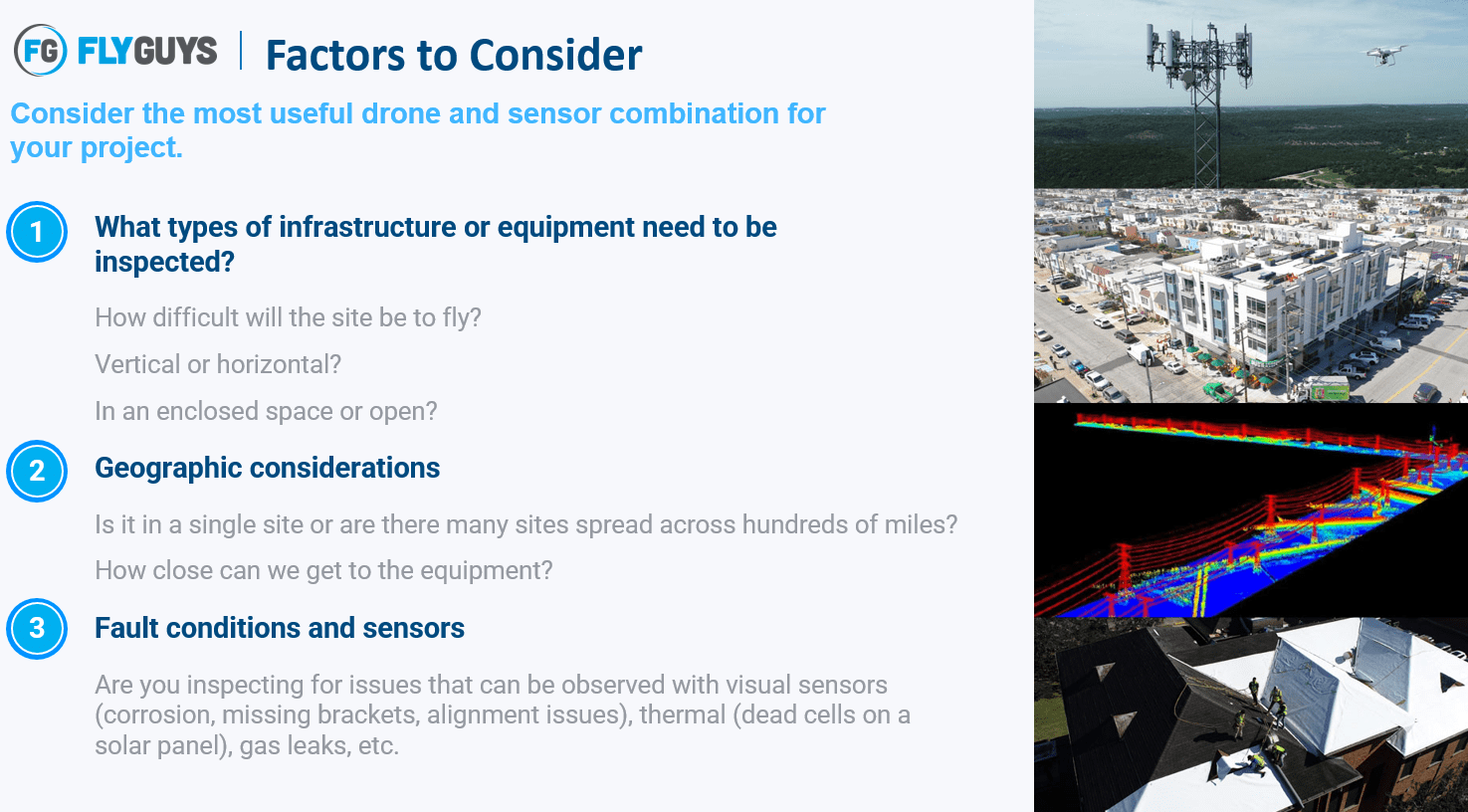
3. Data management: Do you have a plan for managing the vast amounts of data that come from a computer vision AI inspection program?
- Capturing data in an AI-ready format
- Clear and repeatable data upload procedures that allow for uploading data from the field and avoid lost or misplaced data
- Manage and share AI datasets to avoid data silos and enable parallel workflows
- Data organization and routing
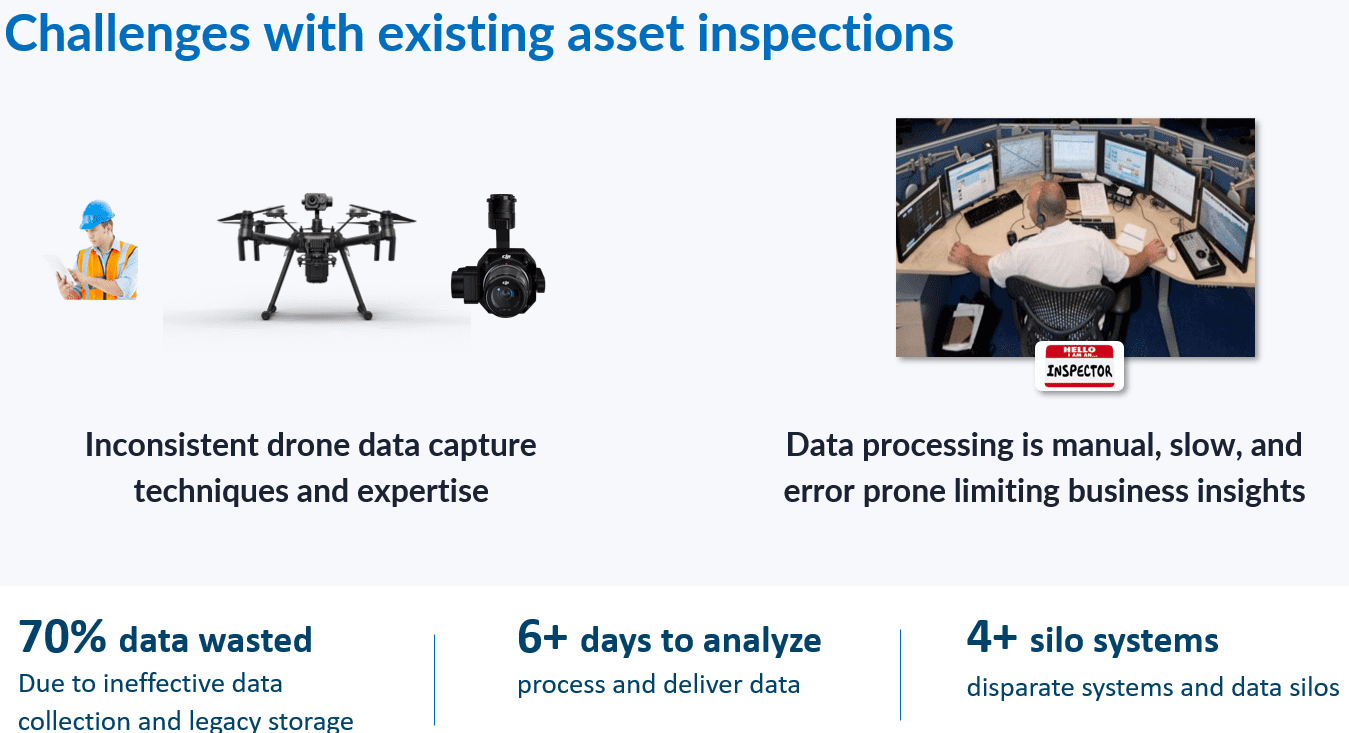
4. AI Workflow: Managing a complete AI workflow can be complex and may require integrating with multiple platforms, outsourced vendors and internal departments. The steps involved in implementing a computer vision AI program include:
- Capturing and managing the data
- Building the AI datasets
- Create and deploy AI models
- Operationalizing and scaling the program: This includes system integrations to automate action (e.g. dispatch and ticketing), and ongoing model improvements by utilizing results and new images to improve accuracy of classifier
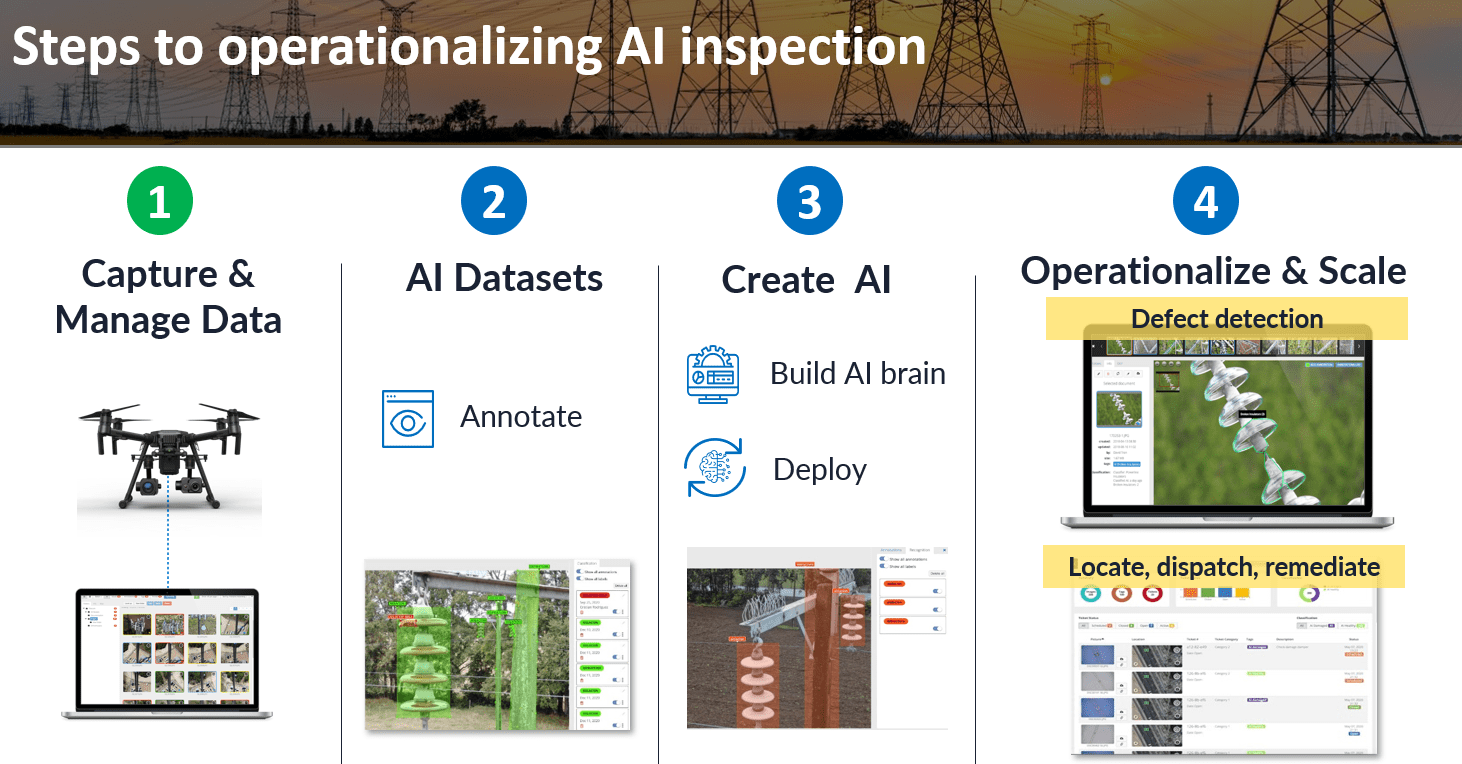
5. Case Study: South American Energy Utility
David walked through the example of a public utility company in Chile, who have worked to improve their operational efficiency and inspection capacity by utilizing drone-based visual AI inspection to detect and geolocate issues on over 1550 km of high voltage transmission lines.
This customer was facing multiple challenges in order to implement an AI-based inspection program, which were addressed by utilizing Optelos as their unified visual data management and AI analysis platform. Optelos solved the below challenges:
- Unified AI Data Management: No central platform to organize and share data required for AI labeling & training.
- Standardized AI Data Labeling: Only had point tools for labeling, difficult to collaborate between different workgroups (AI Project Manager, 3rd party SME, Data Scientist, CDS)
- AI Model Creation: Creating AI models often require data scientists to manually compile the labeled data, process and train the AI models
- Deploy and Operationalize AI: Deploying AI Models into existing inspection workflows is manual and often requires IT resources to deploy and support the AI.
6. Results: This customer has realized many benefits from instituting their visual AI inspection program. The program has been so successful, they are in the process of expanding the program internally to other departments. Key results have been:
-
- 8x more inspections utilizing the same resources
- 37% increase in identification of failure conditions
- 42% reduction in downtime and time to repair.
